Cologne Creative | Designer | Exhibitions and Shows | imm cologne | Nils Holger Moormann | Passagen Cologne
Within any regular pentagon one can locate, in numerous, manifold, relationships, the Golden Ratio, that centuries old guarantor of harmony, balance, beauty....
And within an irregular Pentagon?
With the exhibition Design Gruppe Pentagon the Museum für Angewandte Kunst Cologne search for an answer in context of the 1980s Rheinland design quintet.......
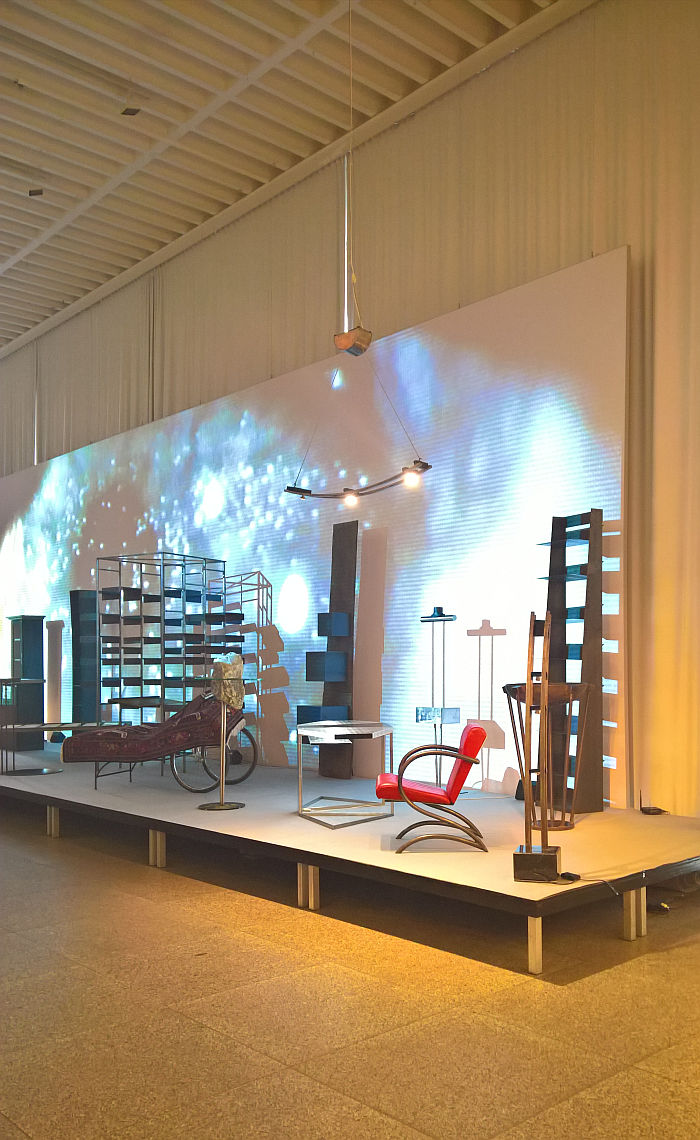
Established, more or less, formally in Cologne in 1985 by Gerd Arens, Wolfgang Laubersheimer, Reinhard Müller, Ralph Sommer and Meyer Voggenreiter, Pentagon, or perhaps more accurately put the five Pentagonia* as individuals and collectives of varying composition, were important protagonists in the development, advancement and dissemination of so-called Neues Deutsche Design, NDD, that moment in 1980s West Germany that saw a new generation of creatives challenge, question, disrupt and corrupt both contemporary aesthetic, functional, material understandings and also the German design tradition, for all that more recent tradition as dominated and informed by the likes of Bauhaus, the inter-War Functionalists, or the post-War gute Form disciples such as those who congregated at the HfG Ulm.
A German wide phenomenon NDD was also in many regards a specifically German, Germanic?, response to 1980s realities and developments.... and a subject for another day, whereby an introduction for all newbies can be found in our post from the Bröhan Museum Berlin's 2014 exhibition Schrill Bizarr Brachial. Das Neue Deutsche Design der 80er.
Here our focus must be Gruppe Pentagon. And Design Gruppe Pentagon. An exhibition which, much as a pentagon, and Gruppe Pentagon, is formed of five faces, helps one approach an understanding of Gruppe Pentagon through five facets.
Just as many an engaging drama, many a good, entertaining, narrative, yarn, opens with a diverse group of individuals, often with an innate, if initially unknown, connection, coming together in a specific context in a specific location, so the story of Gruppe Pentagon.
In the early 1980s Wolfgang Laubersheimer, Ralph Sommer & Reinhard Müller arrived via different routes in Anton Berger's Sculpture class at the Kölner Fachschule für Kunst and Design, the former Kölner Werkschule, and where, in addition to developing their position to and understanding of art, they began cooperating on commercial projects, for all shop fitting projects, and for all projects realised in context of the company Unikate established in 1982 by Laubersheimer and Sommer. In our 2015 interview with Wolfgang Laubersheimer we discussed Unikate and those early projects in a little more detail, including how over time the circle of those involved in Unikate projects grew, beyond Laubersheimer, Sommer and Müller to include the Master neon lighting constructor Gerd Arens, and the Art History and Philosophy graduate Meyer Voggenreiter, who after leaving Marburg University had moved from the arts to graphic design. And how imperceptibly over time the realisation arose that the circle around Unikate needed a new form if it was to continue.
Consequently from that circle a pentagon was formed.
And true to themselves, no one asked a mathematician if that was even possible.
A key, clearly definable, starting point for Pentagon as a group can be considered the opening by the five in September 1985 of an eponymous gallery on Cologne's Hansaring, later moving to Bismarckstrasse on the edge of Cologne's Belgian Quarter and an area still home to young creatives, and space(s) which much as allowing the Pentagonia a platform to present, and sell, their own works, also served as a platform for new cultural expressions by a new generation of European creatives: Gallery Pentagon presenting works by creatives as varied as, and amongst many, many others, Volker Albus, Stiletto Studios, Siegfried Michail Syniuga, Kunstflug or Jasper Morrison, the presence of Morrison underscoring the role those impulses and experiences Morrison collected during his two residences in 1980s West Berlin, and through the people with whom he associated in 1980s West Germany, played in shaping his understanding of design. And no, we're not going to, once again, quote from his 1984 essay The Poet Will Not Polish. Although we do advise you read it.
Although not the first design gallery in Germany, Gallery Pentagon was one of the first, such galleries being still very rare in Germany, as most everywhere in the mid-1980s, design being still something very much aligned to industrial production and commercial distribution rather than limited editions, one-offs and conscious reflections of contemporary reality; thus, through the gallery, and the wide scope of creatives they presented, Pentagon not only helped normalise the understanding of design as more than a mass market capital commodity, as something connected to art and craft as much as industry, as something rooted in contemporary society and culture, but also helped strengthen the networks of those 1980s creatives seeking to challenge, question, disrupt and corrupt contemporary understandings and the established status quo.
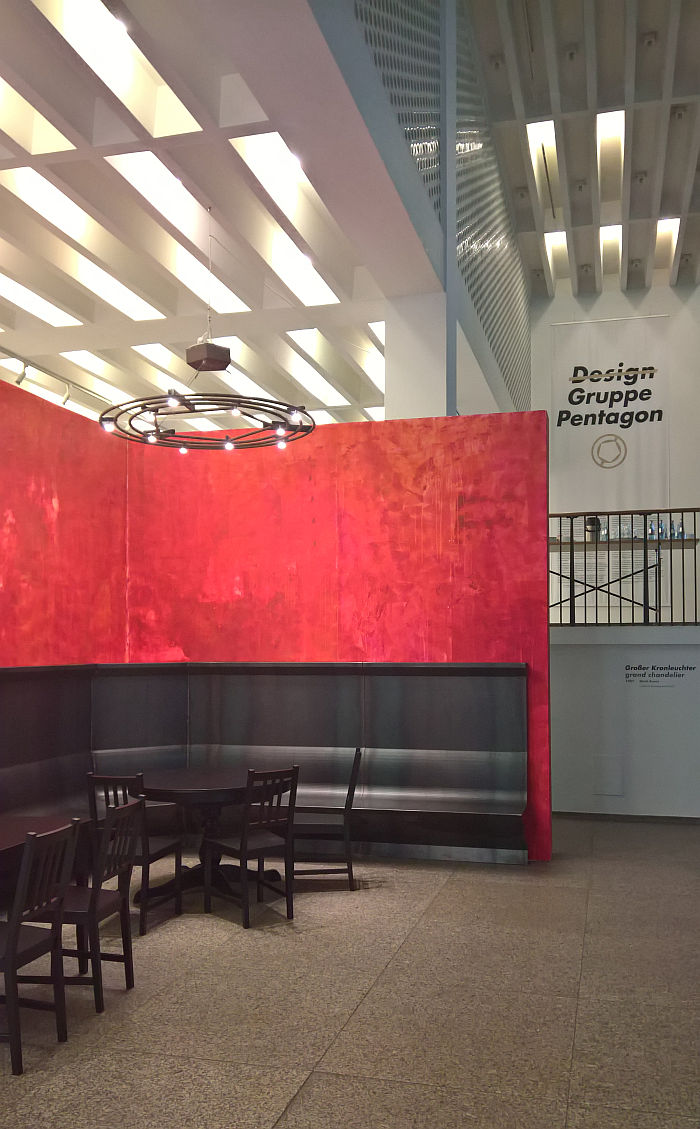
If the opening of the Cologne gallery marks the formal beginnings of Pentagon, the group's participation at the 1987 documenta 8 art biennale in Kassel (more or less) marks the moment they became visible to a wider public.
In March 1987 Manfred Schneckenburger, curator of documenta 8, wrote to Pentagon, or Liebe PENTAGON-Leute, Dear PENTAGON-folks, as he so deliciously opens his letter, to ask if they would be interested in transforming the interior of a former disco in Kassel into a cafe space to host a Fête Permanente during the 100 days of the biennale. The PENTAGON-Leute were, and realised with their Cafe "Casino" a contemporary interpretation of the artistic cafe of yore, a contemporary interpretation of the Parisien Café Certa of Surrealism, the Cabaret Voltaire Zürich of Dada, Moscow's Cafe Pittoresque of the Constructivists, or indeed the coffee houses of olden Vienna with their authors, artists, musicians, philosophers and Thonet bentwood chairs. Or put another way Cafe "Casino" can be considered an exploration in reflections on the historical relevance of the cafe as a creative conduit, as a cultural transmitter and receiver, translated into the now. Whereby in context of Pentagon's Postmodernist associations and debunking of German tradition we do like Ralph Sommer's synopsis of the project: Von Bauhaus to Brauhaus1. From Bauhaus to Brewery. A phrase, we note, his erstwhile colleague Laubersheimer appropriated for a 2019 Semester project at the Köln International School of Design, KISD, but it is a very good phrase. And Brauhaus Weimar and/or Brauhaus Dessau being a craft brewery simply waiting to be founded.
As much as Cafe "Casino" was a physical space, with a physical interior and very real food and drink, it was also about the performance and interventions that happened within, it's role as a platform for documenta 8 to exist outwith the formal planning and programme, an underscoring of creativity as a passing, transient, moment as much as a tangible entity. And also the increasing interplay of art and design in the 1980s, of the radicalism of the 1960s and 70s becoming an activism, and of design as much a conceptual expression as a physical one.
Following Kassel Cafe "Casino" travelled to the São Paulo Biennale and was also, more or less, further developed in to the travelling catering concept Cafe "Container" - a cafe in two shipping containers. A concept which would raise very few eyebrows today, but which did when proposed in 1989.
Similarly, beyond that which was created and realised in context of Cafe "Casino" equally interesting is that which wasn't realised, including a plan to have a, more or less, algorithmic, smart, menu which continually adjusted prices in an attempt to maximise profit and to steer guests in particular directions, and a digital jukebox via which visitors could create, and play, their own compositions using programmes coded by the Cologne based computer composer Klarenz Barlow. And thus innovations which in many regards predicted coming realities. Or would have, had time and money allowed for their creation in 1987. But conceptually Pentagon were there.
The MAKK's main exhibition space is given over to works by the Pentagonia, works which on the one hand allow one to approach a better understanding of the differences/similarities between the works Pentagon members were realising both amongst themselves and also in context of other 1980s expressions, for all those from Italy which often stand as definitive synonyms for Postmodernism, but also, and what particularly caught us, and thinking back to the exhibition 1980s – A new era in furniture design at the Museum of Furniture Studies Stockholm, is/was the comparisons with 1980s Swedish design, and on the other hand allows one to reflect a little more on the scored through "Design" in the exhibition title. A score-through that under-scores the Pentagonia's position to the relationship of their work to design.
We are in no way qualified to contradict the Pentagon Five, even to consider it would be to act of contemptuous impudence that in previous ages would have seen us deported in chains to some far flung island. And rightly so. But.........
In context of the exhibition 1989 - Culture and Politics at the National Museum Stockholm we opined that much as the political events of 1989 were but a continuation, culmination, escalation of events that had been developing throughout the 1980s, so was the art and design of the late 1980s/early 1990s a response to those events, a response which had been developing throughout the 1980s, inter-twinned, in dialogue with and inseparable from the wider political, social, technological, health, economic et al developments of the decade.
Behind the Pentagon objects runs a video loop of political, cultural, sport et al events from the 1980s, a video loop which deliciously and very satisfyingly visualises the background against which first the Unikate and subsequently the Pentagon works arose, and thereby forcing the viewer, you, to establish a connection between the two. Between context and object.
A connection which, for us, says that what Pentagon realised is very much design. The works may not have been consciously conceived as such, many not have been consciously conceived in context of conventional design processes and theory, may have been conceived in a segue, a transition, a dialogue between art and design, but are, and for all the myriad irritations the Pentagon works may illicit, functional objects, and as Design Gruppe Pentagon elucidates functional objects conceived in context of a discourse with, reflections on, arguments against, contemporary realities, contemporary understandings and contemporary objects, and thus, for us, are and were design.
And functional objects which one can also consider for themselves, outwith such theoretical frameworks, as individuals with whom to strike up a dialogue. Or not. Among those works which particularly caught our attention were two 1985 containers/sideboards by Wolfgang Laubersheimer, one with drawers and a slanting top, a work which on first glance one assumes is historic, on second understands it isn't, and a work which could, should, must be a very practical piece of (home)office furniture, the other with drawers and a toy train track on top, which strikes us as being less practical; Gerd Arens' 1987 garden benches with their improbable though highly logical structure and an idiosyncrasy that charms the unwary; and the Amazonas desk by Wolfgang Laubersheimer with a small, intermittently plant lined, river valley running around it, a joyously irreverent yet unflinchingly sincere and disciplined work in sandstone and steel, and a work which in many ways reflects, predicts?, contemporary desires to bring the outside in, and which thus has arguably become more contemporaneous over the intervening three decades. Were you to make it today you would obviously need to set part of it on fire and give part over to the cultivation of palm oil/avocado/quinoa/Bong trees/whatever the current fascination of lifestyle marketeers and well-being snake oil sellers is. It's called progress, apparently. And confirmation of just what a positive power capitalism is.
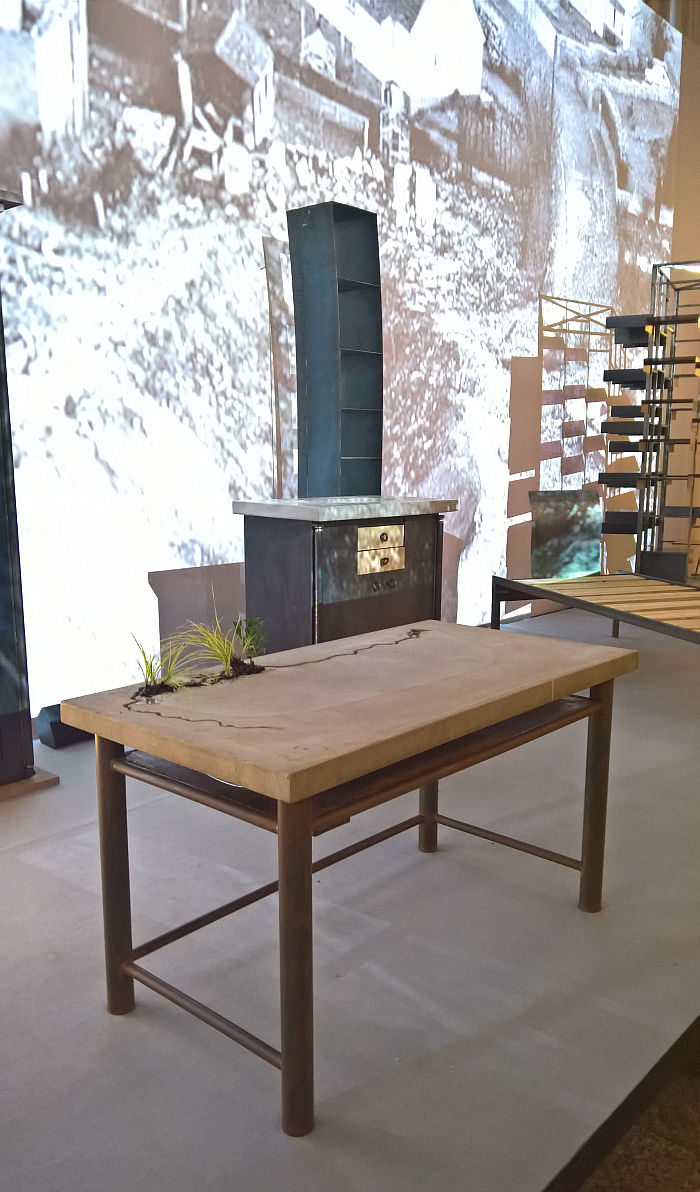
In May 1991 Pentagon were invited to stage an installation/intervention in the Vienna furniture store prodomoWien; an invitation which saw the five not only turn prodomoWien into a Pentagon workshop for four days, but use that workshop, and the four days, to create their final, and technically only second, joint work: a Kochstelle, a cooking hearth
And that was that. Barely six years after formally establishing, the Rheinland Pentagon dissolved into its five individual faces.
A fate that befell Postmodernism in general: just as quick as it (apparently) arose in the early 1980s it (apparently) faded in the late 1980s/early 1990s.
That Postmodernism in general, and Neues Deutsche Design specifically, was a brief, blink and you'll miss it moment, appeals to us. For, and much as with inter-War bent steel tube furniture, that other brief, metal heavy, design moment, while the basic idea had enough material for a very good, engaging, short story, it would never have maintained its tension, vitality and interest if extended to a novel. Not least because the wider realities that carried 1980s design largely vanished in 1989, designers lost their conversation partners, would have been attempting a dialogue with memories, losing thereby both objectivity and authenticity. The only choice was to move on. To have carried on would have been as if Pentagon had recreated Cabaret Voltaire for documenta 8. Wouldn't have worked.
And while Postmodernism, NDD and Pentagon may all have ended, their/it's legacy didn't, the helix on which we travel continuing ever onwards: informed, enriched, widened, since the 1980s by the likes of Pentagon and their ilk.
Which brings us back to the Golden Ratio.
The Golden Ratio is an historical understanding, one defined in historic economic, political, cultural, social, et al realities, and associated historic understandings of harmony, balance, beauty. For all the realities and understandings of Renaissance Europe.
And while that in no way detracts from the contemporary validity of the definition, it needn't, can't, be the only, exclusive, guarantor of harmony, balance, beauty: evolving realities necessarily allowing for new understandings of aesthetics, functionality, materials and by extrapolation of harmony, balance, beauty. Or put another way, and as we noted from the exhibition Divine Golden Ingenious. The Golden Ratio as a Theory of Everything at the Museum for Communication Berlin, not only have cultures who were untroubled by the Renaissance, for example Japan, developed their own definitions based on their specific realities, but also the standardisations of the Modernist, inter-war Functionalists can be understood as the development of new understandings of aesthetics, functionality, materials, new definitions of harmony, balance, beauty, based on new realities.
So Neues Deutsches Design
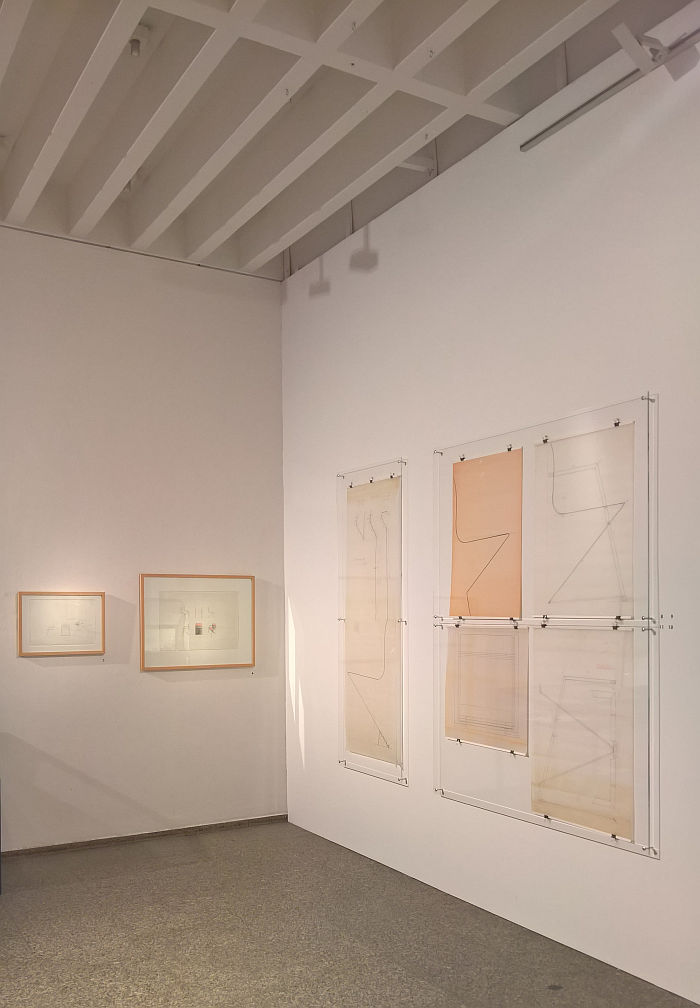
Pentagon and their contemporaries didn't provoke for the sake of provoking..... OK maybe a bit, quite a bit, lest we forget many did have artistic backgrounds, but rather provoked because their rejection of existing understandings of aesthetics, functionality, materials provoked existing sensibilities. Sensibilities which were still (firmly) rooted in Biedermeier, Gelsenkirchener Barock, Functionalism, et al and which were being exposed for the first time to new aesthetic understandings, new material uses and combinations and for all new understandings of functionality, something no longer to be associated with usability or status, but which was moving on to embrace emotional or linguistic aspects. And certainly was no longer being diligently followed by form. Nor was 1980s form concerning itself that much with the Golden Ratio. But was concerned with harmony, balance, beauty, albeit contemporary understandings of such.
Which isn't to say one can't find the Golden Ratio in one or the other work, indeed we firmly believe that one will find within one or the other Pentagon work axes and diagonals where (a+b)÷a = a÷b, so inherent and deep-rooted is it in our collective psyche. Is to say as time evolves so do our understandings of and relationships to those objects with which we surround ourselves, and through their work, their understandings and their provocations, it is groups like Pentagon, creatives such as the Pentagonia, who help move our understandings forward, help move us further away from Renaissance understandings, without ever completely losing touch, and thereby enable us to develop our own understandings of harmony, balance, beauty as a component of both the helix of history and our own cultural, social et al realities.
Or put another way, it's not the works on show in Design Gruppe Pentagon that are important, isn't the interior design and furniture of Cafe "Casino" that is important, isn't the exhibitions staged in Gallery Pentagon that are important: it is the reflections, understandings and positions inherent within such that are important and how our collective discourse with those reflections, understandings and positions allows contemporary design, contemporary society, contemporary culture to evolve and develop.
A relatively bijou presentation, if one that all involved are keen to underscore would be difficult to make much larger, so little having survived the past three decades, in addition to the presentation of Pentagon works discussed above Design Gruppe Pentagon also presents, and amongst other objects, posters, flyers etc from the Pentagon Gallery, images of all Pentagon objects created for the prodomoWien exhibition catalogue and objects from Cafe "Casino", including lighting, crockery, a recreation of the wall seating and four of the specially developed bistro tables. In addition we were particularly taken by a collection of promotional material for Wolfgang Laubersheimer's Gespanntes/Verspanntes Regal through Nils Holger Moormann**, one of only very few objects to make it from the gallery scale of NDD to the larger scale commercial market, if one still handmade, and featured in Design Gruppe Pentagon as itself and as a truly glorious lapel badge from 1990, and by the so-called Pentagon Cube, an oversized metal dice developed by Laubersheimer, Müller and Voggenreiter for Milan 1991, each of the six faces being adorned with a different furniture genre - table, chair, cabinet, etc - and thus an aid to deciding what to create that day. And an object we'd argue is crying out to be re-issued in a new material and for new, contemporary, scenarios: a seating option for a hip start-up's "Brainstorming Lab" being our current favourite option. Or as an ordering aid for the indecisive/brave/foolhardy in a bar.
As an exhibition Design Gruppe Pentagon is rounded of, or perhaps more accurately put, opened by a ca 20 minute documentary film featuring interviews with the five Pentagonia and numerous contemporaries, and which through expanding and extenuating that which is on show allows one to approach a much better understanding of Gruppe Pentagon, of 1980s West German design, of Gruppe Pentagon in context of 1980s West German design, of 1980s West German design and of Gruppe Pentagon in context of contemporary design.
And for all the understanding that in an irregular Pentagon one finds a much more differentiated understanding of harmony, balance, beauty than simply the Golden Ratio......
Design Gruppe Pentagon runs at the Museum für Angewandte Kunst Köln, An der Rechtschule, 50667 Cologne on Monday January 13th and runs until Sunday April 26th
* We're unsure from where the term Pentagonia originates, but adore it. We heard it first at the exhibition preview and use it freely and liberally in our text. Congratulations, and thank you, to whoever first coined it.
** Wolfgang Laubersheimer calls it the Verspanntes Regal, Moorman sell it as the Gespanntes Regal, in Design Gruppe Pentagon both terms are used. For all non-Germanophones it's the difference between Verspannte - Braced and Gespannt -Taut. We don't know which is correct, technically both are. It is braced and taut. And we don't really care which is correct. All we care is that the work itself is moment of eternal joy.
1Quoted in Pentagon. Informal Design, Benedikt Taschen Verlag, Köln, 1990
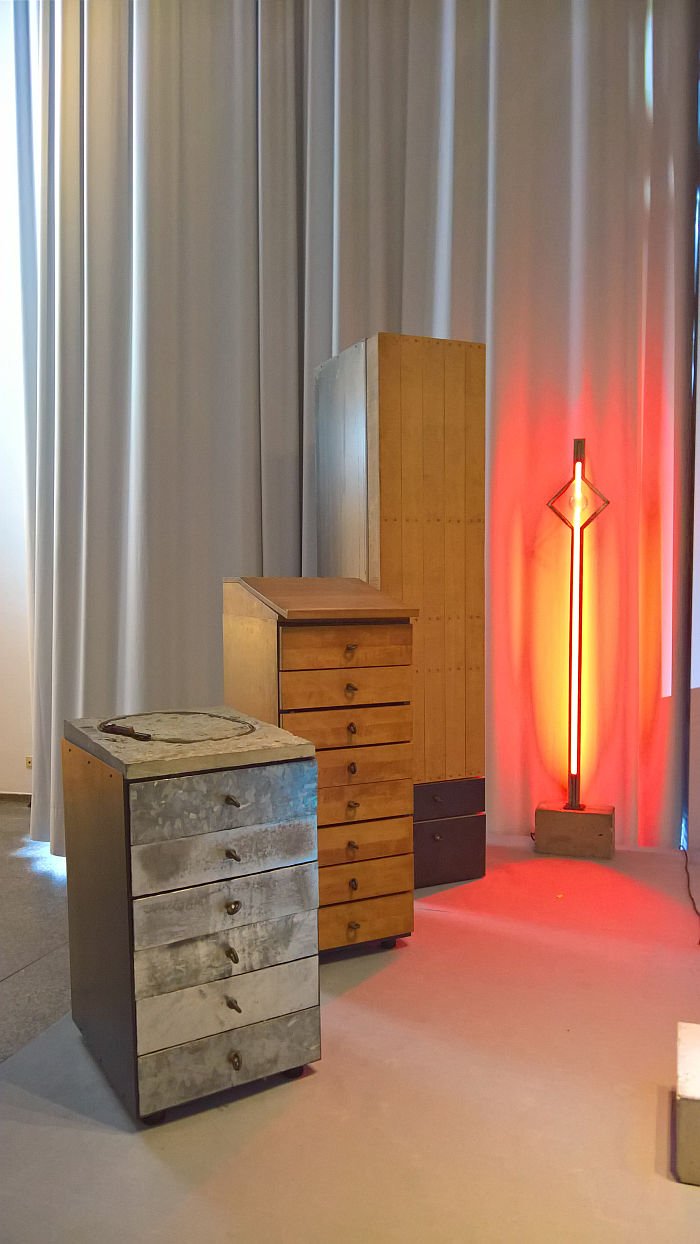
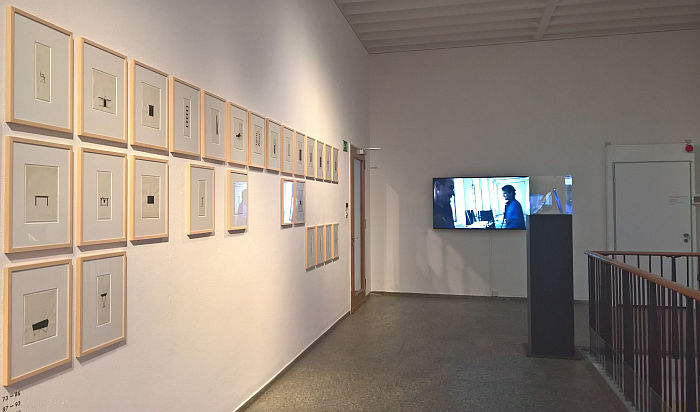
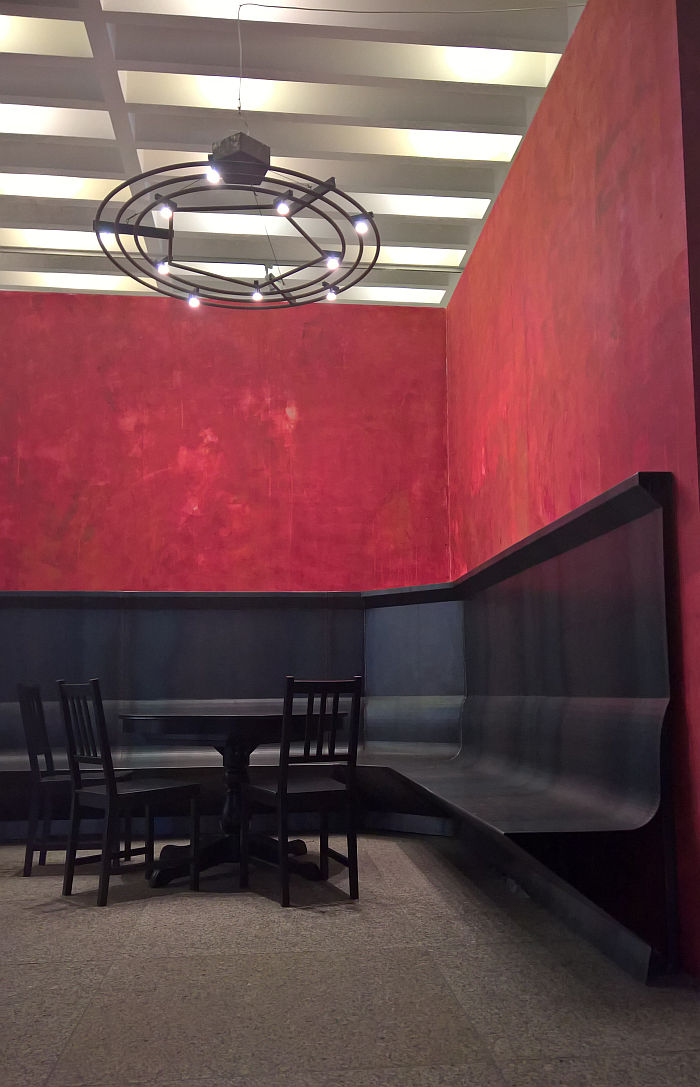
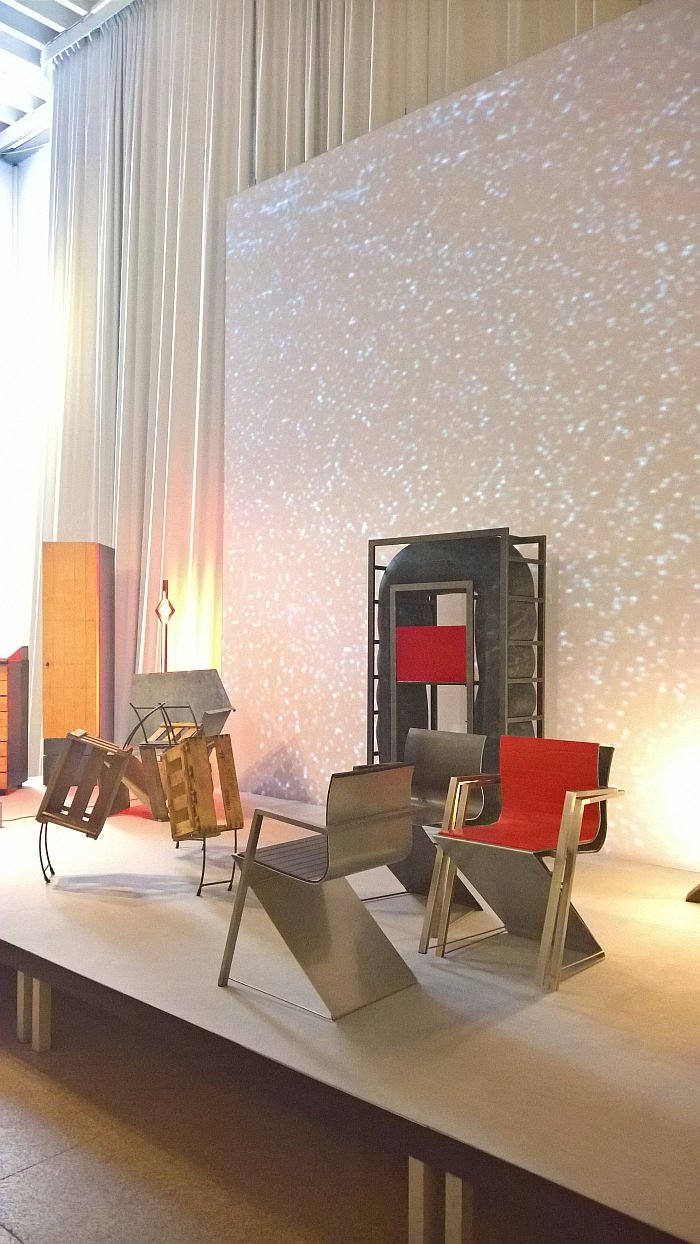
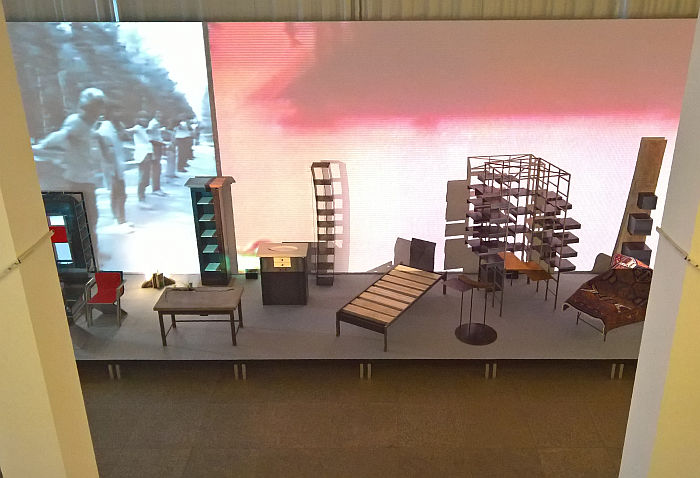
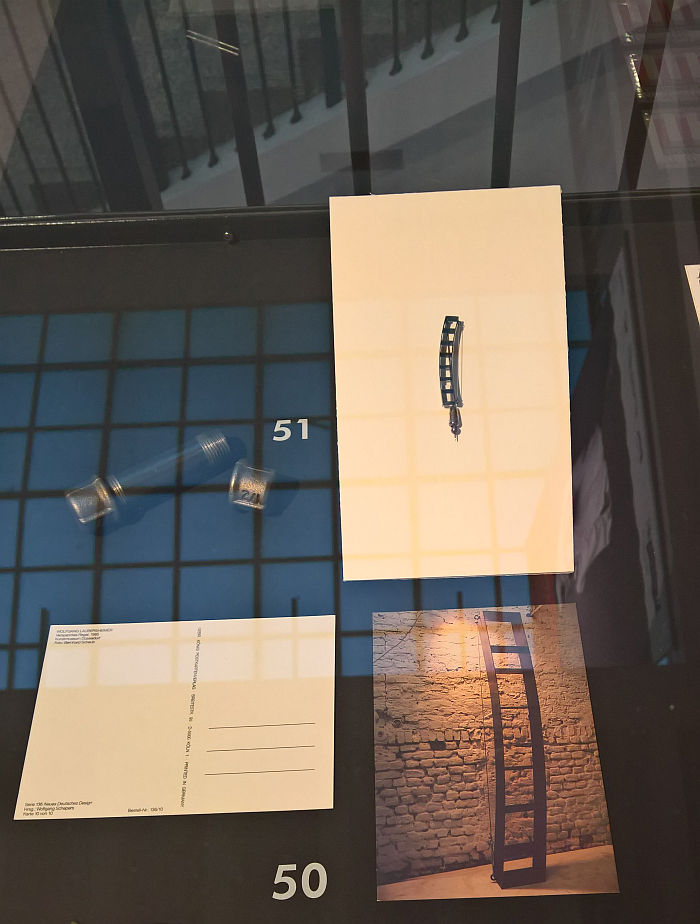
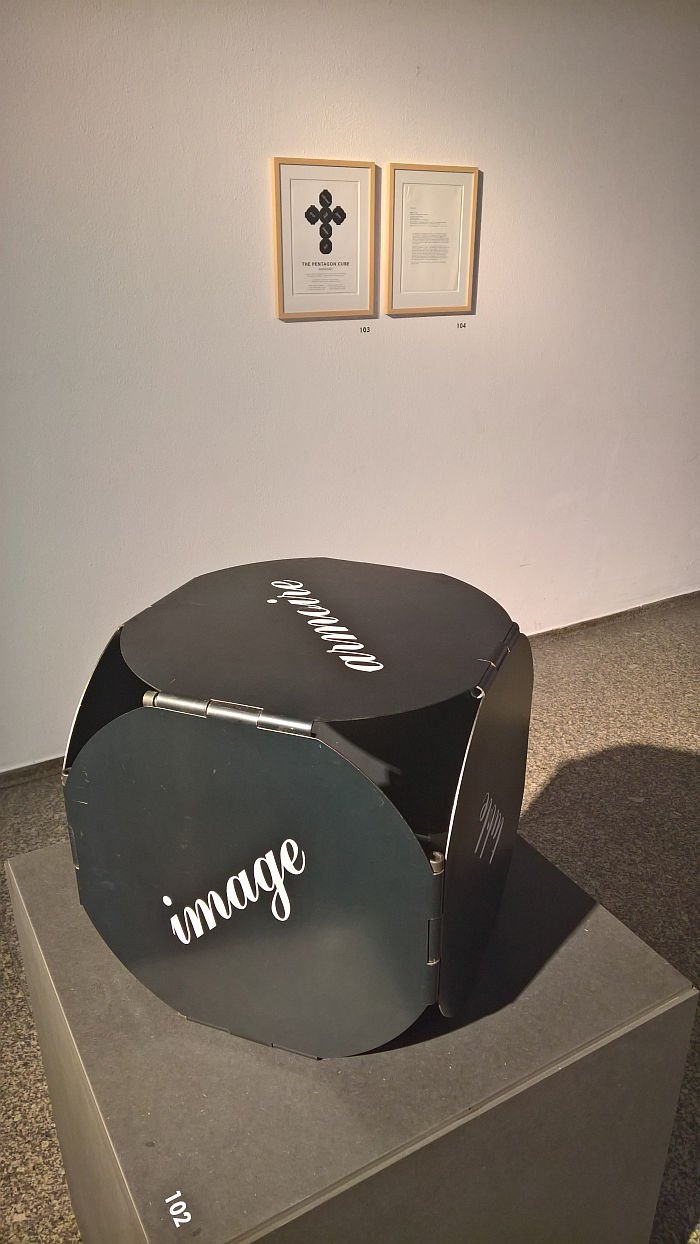
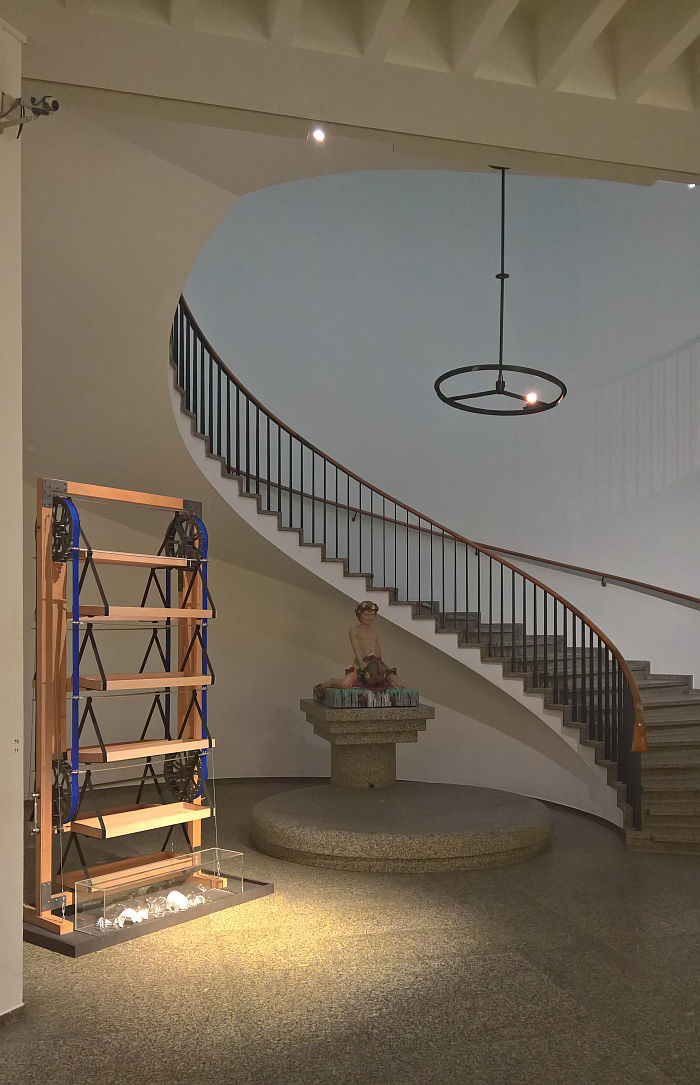
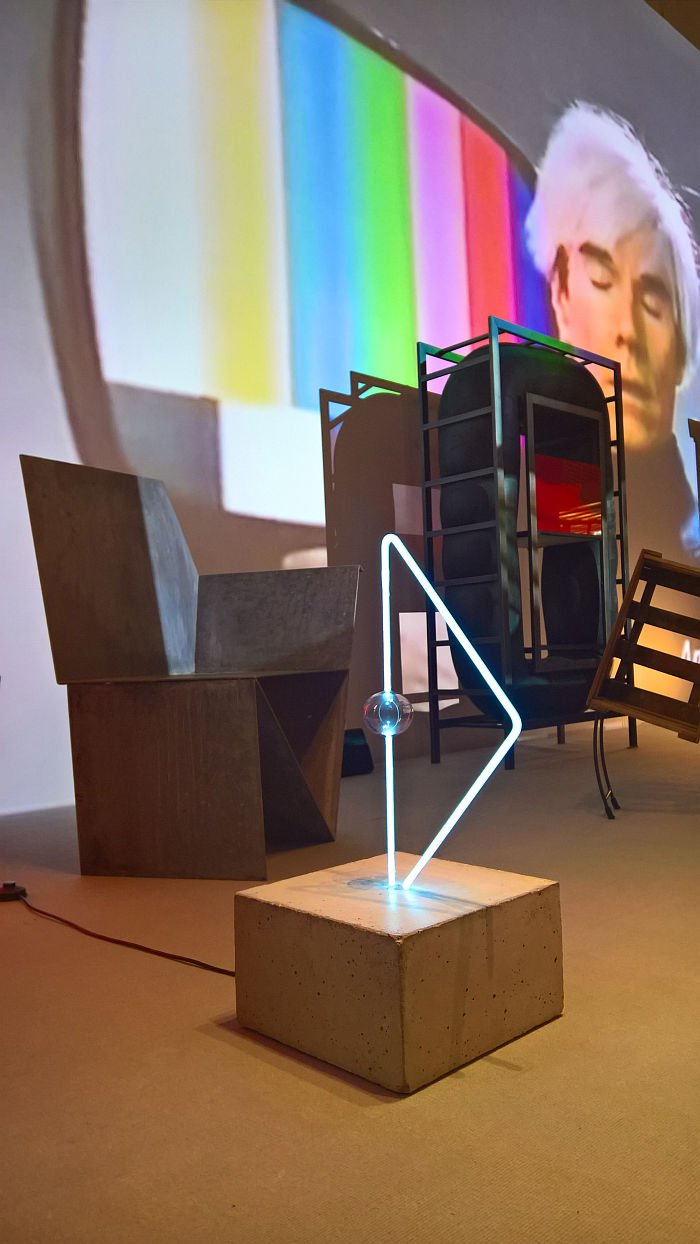
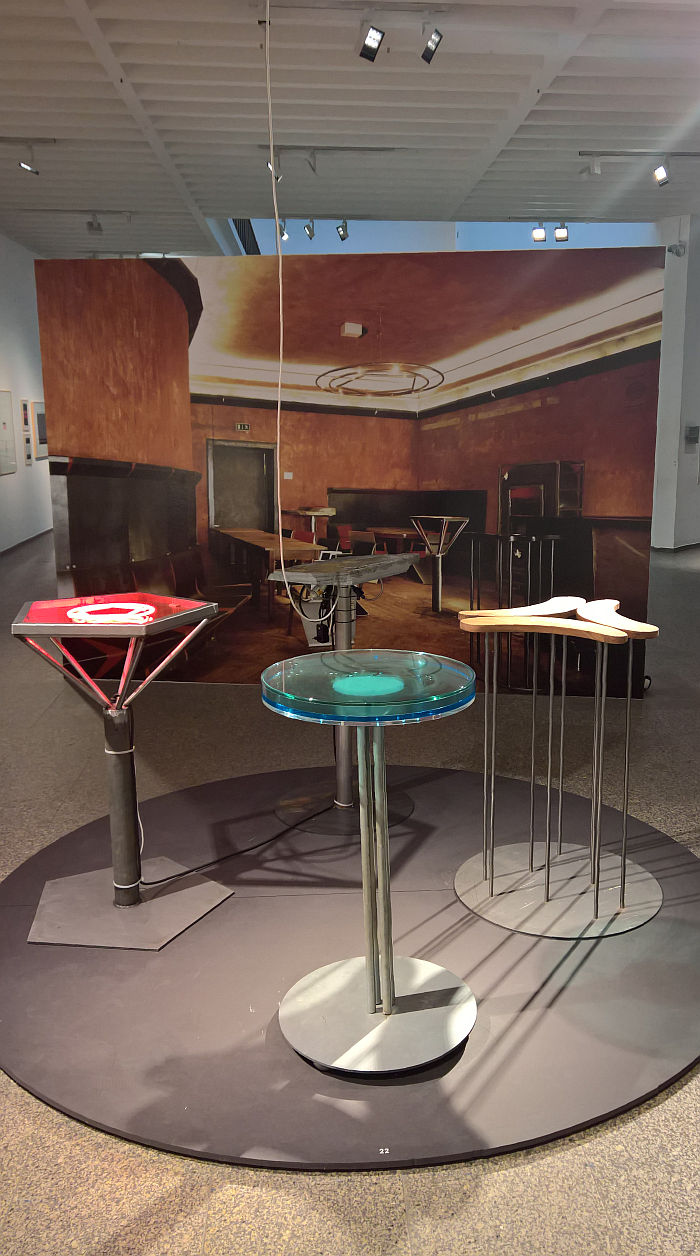
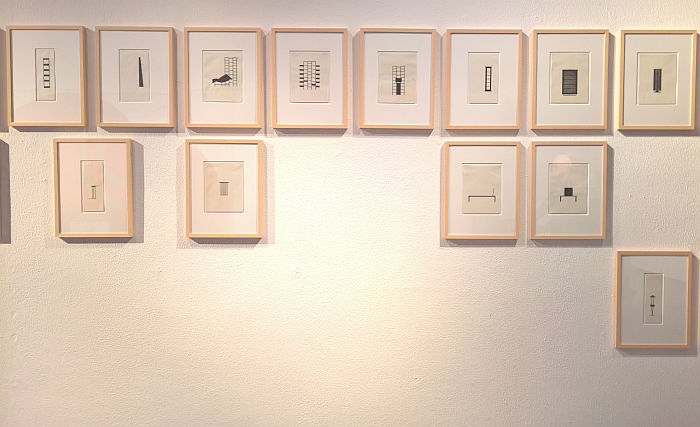
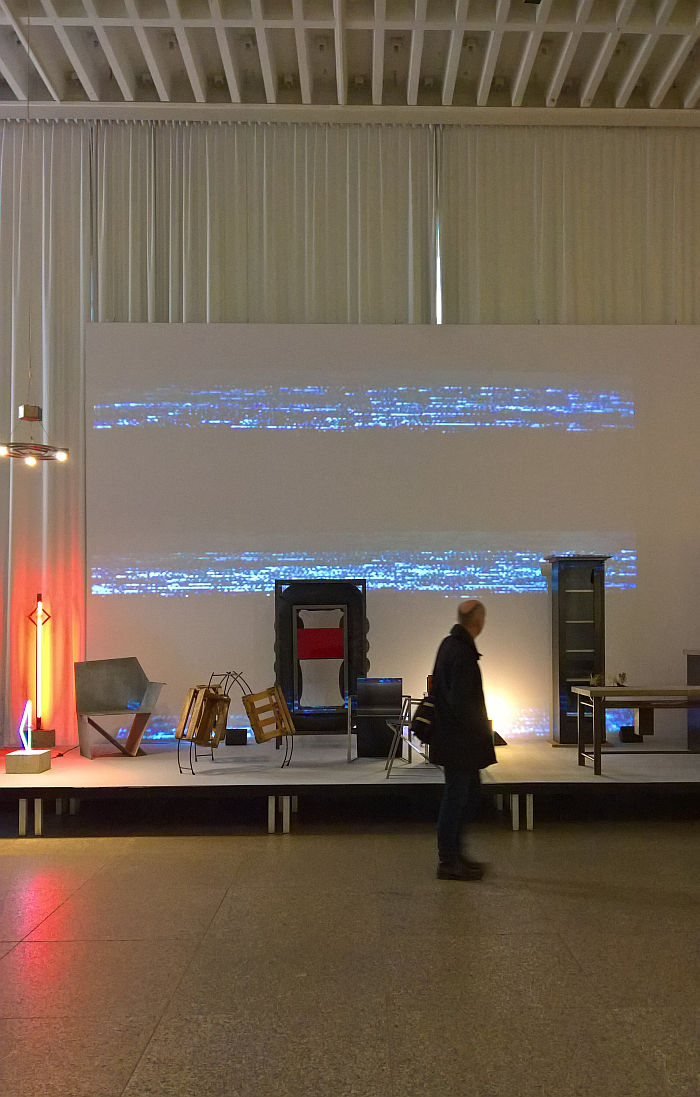
Full details, including information on the accompanying fringe programme can be found at https://makk.de/Pentagon